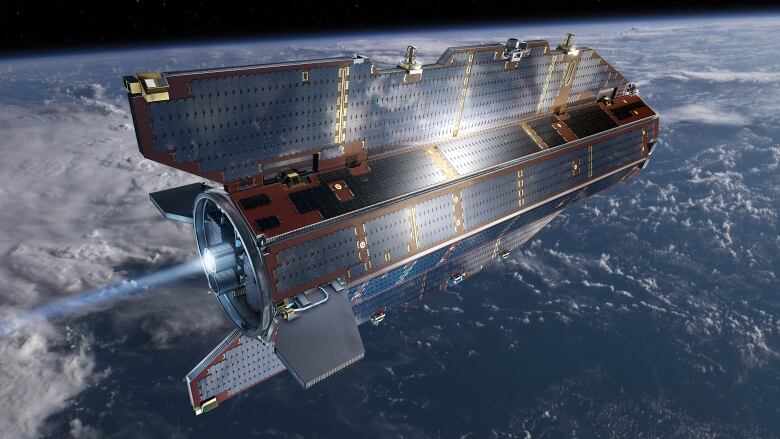1-tonne GOCE satellite falls to Earth Sunday night
Risk to humans from GOCE debris very low, ESA says

A one-tonne European satellite is expected to disintegrate in the atmosphere and fall to the Earths surface in pieces Sunday night.
The European Space Agencys Gravity field and steady-state Ocean Circulation satellite, launched into orbit in March 2009, ran out of fuel in October and has been dropping slowly out of orbit ever since.
On Friday, the ESA predicted that GOCEwould re-enter the atmosphere and break up into pieces overnight between Sunday and Monday, when it has dropped to 80 kilometres above the Earth's surface. Earlier Friday,GOCEwas about 170 kilometres above the Earths surface around50 kilometres lower than when it ran out of fuel,and was expected to drop another eight kilometres over the course of the day, theESAsaid.
The space agency said most of the satellite will disintegrate in the atmosphere, but some smaller parts are expected to reach the Earths surface.
When and where these parts might land cannot yet be predicted, but the affected area will be narrowed down closer to the time of re-entry, the space agency said in a news release on Oct. 21.
Low risk of getting hit by satellite
However, the space agency notes that the chance of being hit by a piece of the satellite was very low, given that the pieces are expected to land in a very small area about 15 metres square and the population density of the entire Earth is just 14 people per square kilometre.
In fact, theESA says, space junk in the form of old satellite debris falls to Earth constantly, but the average person still has three times the chance of being hit by a meteorite than ofbeing hit by space junk.
GOCE is also significantly smaller than some other satellites that have re-entered the atmosphere without causing any damage, such as:
- Roscosmos's 13.2-tonne Phobos-Grund probe, which wasoriginally bound for one of Mars's moons. The spacecraft, which was carrying a load of toxic fuel, fell into the Pacific Ocean in 2012.
- NASAs 5.4-tonne Upper Atmospheric Research Satellite, which fell to Earth in 2011, landing in the ocean off the west coast of North America.
GOCE was designed to precisely map variations in the Earths gravity, providing baseline data to help scientists accurately measure ocean circulation and sea-level change. Its data has also been used to create a high-resolution map of the boundary between the Earths crust and the layer just beneath that, the mantle.
The ESA says GOCE also detected sound waves from the 8.9-magnitude earthquake that devastated Japan in 2011, making the satellite the first ever seismometer in orbit.












_(720p).jpg)


 OFFICIAL HD MUSIC VIDEO.jpg)
.jpg)



























































































